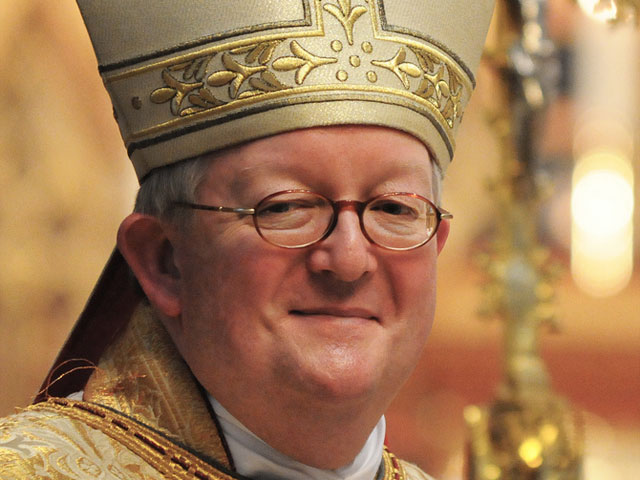Let me draw your attention to this fascinating article in the Parisian weekly news magazine Le Nouvel Observateur about the new generation of Catholics arising in France.
The article « Plongée dans la galaxie “catho-réac-décomplexée” » in Le Nouvel Obs (with a circulation of over 500,000 it is France’s most widely read general information weekly) asks the question who is leading the charge against the Socialist government’s gay marriage agenda — and finds that it is the “cathos 2.0” generation. The 20-25 year old:
Enfants de Jean-Paul II et de Benoît XVI, … une nouvelle génération catho à la tête haute, grisée par la découverte de la militance, est née, très éloignée de la pudique discrétion de ses aînés.
Children of John Paul II and Benedict XVI, … a new generation of Catholic has arisen, intoxicated by their discovery of militancy that is far different from the modest discretion of their elders.
Deconstructing this article has proven to be a hard task. On the surface the story of the Cathos 2.0 generation is so strong that it cannot be killed by a skeptical or hostile presentation. It is a French man bites dog story — student revolutionaries in Paris as ultramontane Catholics.
On the surface Le Nouvel Obs seems to have framed the story against the interest of the subject. While it allows the young Catholics to tell their own story, the analysis and commentary is drawn from the left — academics and liberal Catholics who bemoan the conservative political and doctrinal views of Cathos 2.0. Nor do we hear from the hierarchy of the Catholic Church in France. This packaging should have made the issues unattractive and painted the subjects in an unsympathetic light. But by the end of the story these young people come off well. You like them.
The article starts off in a critical yet cinematographic mode – – were this a film the opening paragraph would be accompanied by an accordion and perhaps Edith Piaf.
Trois garçons arrivent à Vespa. Un jeune couple veste treillis-capuche-fourrure traverse la place depuis le Café de Flore, situé juste en face. Une grappe de caqueteuses s’approche joyeusement de l’entrée tout en échangeant bises et potins. Une retardataire en talons hauts et breloques diamantées aux oreilles les rejoint en trottinant. Un concert ou un spectacle ? Pas du tout. Comme tous les dimanches soir, la jeunesse chic et branchée de la rive gauche a rendez-vous avec… Jésus ! Le clocher bat le rappel, c’est l’heure de la messe à Saint-Germain-des-Prés.
Dans une église bondée, les jeunes gens, moyenne d’âge 20-25 ans, s’agenouillent devant le saint sacrement comme les bigotes d’autrefois. L’encens brouille la vue, et le choeur entonne un chant latin repris par une assemblée sagement recueillie. Non, nous ne sommes pas chez les traditionalistes de la Fraternité Saint-Pie-X, mais à l’une des cérémonies dominicales destinées à la jeunesse francilienne.
Three boys arrive on a Vespa. A young couple wearing hooded fur jackets crosses the square from the Café de Flore, located just opposite. A cluster of prattling girls happily approaching the entrance while exchanging kisses and gossip. A latecomer in high heels and diamond earrings hurries in. A concert or a show? No. Every Sunday night the chic and trendy youth of the left bank have an appointment with … Jesus! The bell sounds. It is time for Mass at Saint-Germain-des-Prés.
In a crowded church, young people, 20-25 years of age, kneel before the Blessed Sacrament like the bigots of the past. Incense blurs vision and the choir sings a Latin chant taken up by a by the congregation.No, we are not in the traditionalist Society of St. Pius X, but one of the Sunday ceremonies for Catholic youth.
The article continues with this skeptical, near derogatory tone. Traditional Catholic readers are likely to feel the bile rising in their throats as the read the story. Adoration of the Blessed Sacrament and act of « les bigotes d’autrefois »?
On les croyait effacés, et de fait ils nous étaient devenus invisibles. Depuis six mois, on les découvre par centaines de milliers battant le pavé sans relâche contre le mariage gay, veillant à la lumière des bougies sur les Invalides, créant happening sur happening grâce à la force de leurs réseaux, formant le gros des troupes de ces défenseurs acharnés de la famille dite traditionnelle.
Were not these people erased from French life? Had they not become invisible? But for six monthshundreds of thousands of them have pounded the pavement tirelessly protesting against gay marriage, lighting candles on the Invalides, creating event after event in the streets on the strength of their social networks, forming the vanguard of defenders of the so-called traditional family.
The presentation and the structure the first three quarters the story follows the conventional secular thinking of the French elites. Yet by the end of the piece you’re hooked by these kids – – their enthusiasm, their excitement, their faith. I cannot tell whether this was an accident or was calculated move to bring the reader on board. Perhaps what we are seeing here is a conscious bait and switch.
How do you get a middle-aged left-liberal secular audience to read a story about a youth movement that detests the values and agenda of the ’68 generation now in power? You do it by couching the story in tropes and phrases that are comfortable to the audience — and then you slip them a story about young attractive — chic — students at elite universities whose faith is changing France and shaking up the church.
Am I reading too much into this article? What say you GR Readers? For those whose French has faded away since High School, Worldcrunch has a shorter version of this article in English. Beware! The Worldcrunch version is not a translation but a re-write in English and has been de-Francofied for an American audience.











